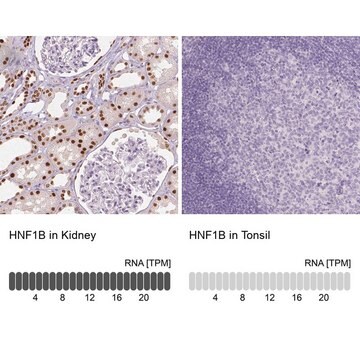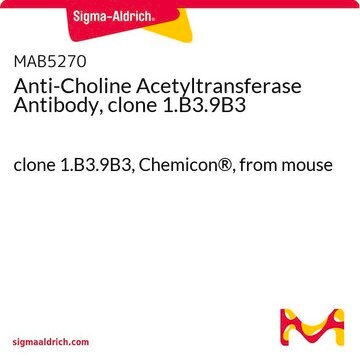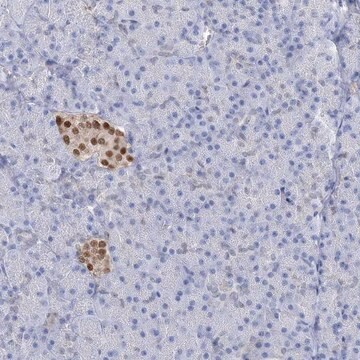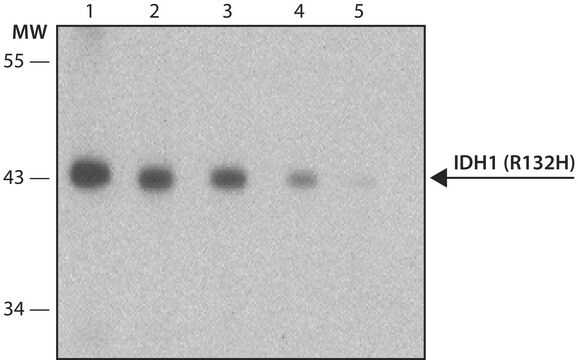General description
Hepatocyte nuclear factor 1-beta (UniProt P35680; also known as HNF-1-beta, HNF-1B, Homeoprotein LFB3, TCF-2, Transcription factor 2, Variant hepatic nuclear factor 1, vHNF1) is encoded by the HNF1B (also known as TCF2, VHNF1) gene (Gene ID 6928) in human. HNF-1-beta is involved in transcriptional and functional regulation of the liver and biliary system, as well as of the kidneys, urogenital tract and pancreatic β-cells. HNF-1-beta deficiency due to HNF1B mutations is a well known cause of maturity-onset diabetes of the young 5 (MODY5), also referred to as RCAD (renal cysts and diabetes) due to the frequent co-occurrence of renal cysts and/or other inborn urogenital abnormalities. HNF-1-beta is expressed in the gall bladder, liver and intrahepatic bile ducts of mouse embryos and in liver of adult mice. HNF-1-beta is shown to co-regulate morphogenesis of the biliary system and HNF1B knockout mice suffer from severe neonatal cholestasis and jaundice due to the abnormally developed gall bladder and dysfunctional intrahepatic bile ducts.
Specificity
Expected to react with isoform 1 (A) and isoform 3 (C). Reactivity toward isoform 2 (B) and isoform 4 has not been determined.
Immunogen
Epitope: Internal (N-terminal half)
GST-tagged recombinant protein corresponding to the Internal (N-terminal half) of human HNF-1-beta.
Application
Anti-HNF-1-beta Antibody, clone 12A5.1 is an antibody against HNF-1-beta for use in Western Blotting and Immunohistochemistry.
Immunohistochemistry Analysis: A 1:250 dilution from a representative lot detected HNF1B in human kidney and rat liver tissue.
Research Category
Epigenetics & Nuclear Function
Research Sub Category
Nuclear Receptors
Quality
Evaluated by Western Blotting in rat brain tissue lysate.
Western Blotting Analysis: 0.5 µg/mL of this antibody detected HNF1B in 10 µg of rat brain tissue lysate.
Target description
~61 kDa observed
Physical form
Format: Purified
Protein G Purified
Purified mouse monoclonal IgG2aκ antibody in buffer containing 0.1 M Tris-Glycine (pH 7.4), 150 mM NaCl with 0.05% sodium azide.
Storage and Stability
Stable for 1 year at 2-8°C from date of receipt.
Other Notes
Concentration: Please refer to lot specific datasheet.
Disclaimer
Unless otherwise stated in our catalog or other company documentation accompanying the product(s), our products are intended for research use only and are not to be used for any other purpose, which includes but is not limited to, unauthorized commercial uses, in vitro diagnostic uses, ex vivo or in vivo therapeutic uses or any type of consumption or application to humans or animals.









